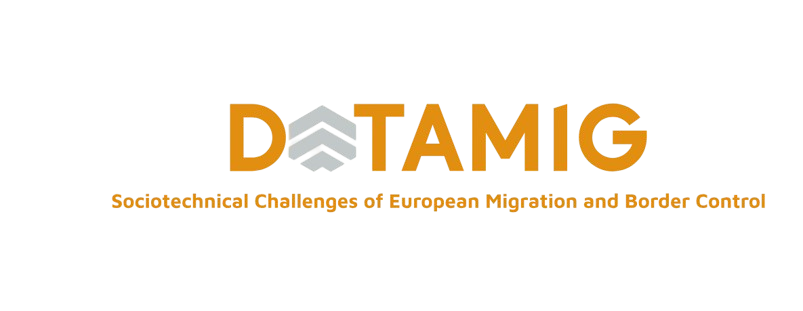DATAMIG Training School 2025 Organised by The Observatory (WG2)
Theme: Mapping Mobility – Past, Present and Future
Introduction
In the context of COST Actions, training schools serve to achieve specific outcomes— such as data collection, training on methodologies, and collaborative analysis. This 2025 Training School invites participants to contribute to the creation of a ‘Data Palimpsest’ of Venice and Gorizia: a multi-layered digital and conceptual map that reveals the intertwined histories of movement, migration, resistance, and data practices across time and space.
European cities have long been shaped by the flows of people, goods, and ideas. From the Roman Empire to the present Mediterranean migration crisis, mobility has been simultaneously disruptive and foundational. This training school brings these movements to life, blending experiential fieldwork with reflective mapping, using historical and digital methods.
Logistics
Participants are responsible for arranging their own travel and accommodation. We encourage the use of a mix of public transport (bus and/or train) as part of the learning experience of mobility. Suggested routes will be provided during the programme.
Please bring equipment to document your movements (e.g., smartphone, camera, or audio recorder). Prior to arrival, download the mobile application ‘Hidden Cities: Venice’ to explore the walking routes and stories embedded in the city:
https://play.google.com/store/apps/details?id=uk.ac.exeter.hiddenvenice
Contact Information
Dr Arely Cruz-Santiago Mobile: +44 07481 828322
Email: [email protected]
Sunday, 1 June – Venice
09:00 – Meeting at Piazza San Marco
We will introduce the training school’s aims and explore mapping and deliberative methods that will guide our engagement.
Guiding Questions:
- What is your current understanding of mapping as a critical method?
- How can movement serve as both method and metaphor?
10:00 – Walk to Riva Degli Schiavoni
Together we will retrace the steps of Elena, a Greek immigrant who lived in Venice in 1572, and reflect on her life during the Ottoman occupation of Greece.
Guiding Questions:
- What spatial traces of migration are still visible?
- How do we voice historical figures like Elena in our research?
11:30 – Unstructured Discussion at Arsenale
An open conversation about the emotional, historical, and spatial experience of retracing Elena’s movements.
Guiding Questions:
- What did you observe or feel while tracing Elena’s story?
- Which spaces felt particularly significant or erased?
12:30 – Lunch
14:00–MeetatSanta Maria deiCarmini
Engage with the narrative of Capitano Biancafore (Venice, 1730), who tracked down a man accused of sexual violence. Explore intersections of data, surveillance, and urban control.
Guiding Questions:
- How does historical surveillance echo present digital tracking?
- What role do gender and space play in narratives of control?
15:30 – Unstructured Brainstorming Session
Drawing from Capitano Biancafore’s story, reflect on themes of policing, religion, sexuality, and their spatial governance.
Guiding Questions:
- What types of borders—material or symbolic—are policed today?
- What stories are made visible or hidden in city spaces?
17:00 – Group Dinner
18:30–EveningReflectionand Exchange
Exchange notes, images, and observations from the day’s activities.
Guiding Questions:
- What moment stood out to you most strongly today?
- What gaps or silences did you encounter in the narrative of the city?
Monday, 2 June – Venice–Gorizia
09:00 – Travel via Traghetto: San Marco to Salute
Explore themes of mobility, war, and history. Venetians, immigrants and tourists in the making of space and the transformation/ conservation of certain types of movement.
Guiding Questions:
- Who has access to movement in historical and modern Venice?
- What forms of mobility are protected, restricted, or erased?
10:30 – Gather at Ponte dei Pugni
Reflect on the contested history and symbolic conflicts tied to this site.
Guiding Questions:
- How do public landmarks reflect struggles over identity and belonging?
- What does this site teach us about visibility and power?
11:30 – Visit Piazza San Marco and the Doge’s Palace
Analyse how imperial architecture reflects state power and how non-native presences are rendered visible or invisible.
Guiding Questions:
- How do these historical accounts preserved in the very infrastructural fabric of the city resemble current challenges regarding mobility, migration and datafication in Europe.
- How are empire and exclusion embedded in the built environment?
- In what ways does the city ‘datafy’ its historical identities?
13:30 – Lunch
15:30–TraveltoGorizia
For train times visit https://www.trenitalia.com/en.html
Tuesday, 3 June – Gorizia / Nova Gorica
10:00 – Meet at Transalpina (Europe) Square
Understand the layered symbolism of the square and its role as both border and bridge.
Guiding Questions:
- What does this square communicate about European identity?
- Where do symbolic gestures of unity fall short of lived experience?
12:30 – Lunch
14:00–MappingtheBorderlesscity.
Option A: Topographies of Memory
An open-air museum that traces the history of 20th-century Europe through the memories of the inhabitants of Gorizia and Nova Gorica. A physical, conceptual, and multimedia journey.
We will trace ten spaces: six in Gorizia, in the part of the town that is now in Italian territory, and four in Nova Gorica, the part that is in Slovenia.
Option B: Participatory roleplay tracing smuggling practices across the Italian- Slovenian border
The role-play exercise takes place during the period after the Second World War, when people tried to slightly improve their standard of living by smuggling goods across the border from Italy to Yugoslavia and vice versa.
Guiding Questions:
- How can acts of resistance be reinterpreted as forms of knowledge or survival?
- What forms of memory are preserved and which are silenced?
18:00 – Closing Meeting
Final reflections and feedback on the training school experience.



